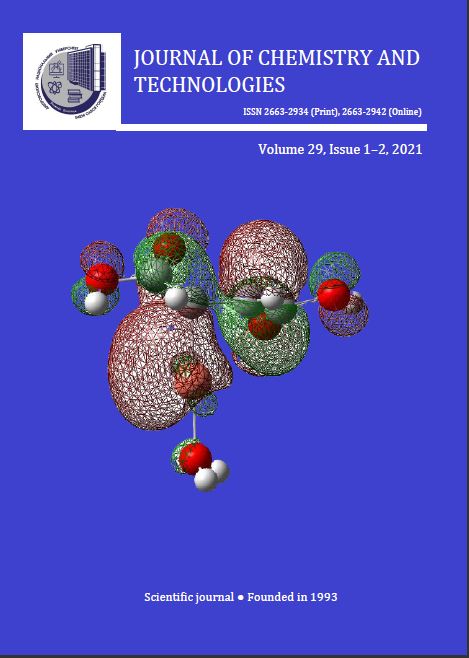TOXICITY AND HYDRAULIC ACTIVITY OF BLAST FURNACE SLAGS AS THE PARAMETERS FOR CHOOSING THE UTILIZATION TECHNOLOGY
DOI:
https://doi.org/10.15421/jchemtech.v29i2.228352Keywords:
blast furnace slag; mineral; hydraulic activity; toxicity; hazard class; recycling; binderAbstract
Aim. The purpose is to determine the hazard class and hydraulic activity of the blast-furnace slag fractions and substantiate the way of their utilization. The study deals with the blast furnace slags from Zaporizhstal, Dnieper Metallurgical Combine (DMC), ArcelorMittal Kryvyi Rig, Illich Iron & Steel Works (Mariupol Metallurgical Combine - MMC) and Alchevsk MC (AMC). Methods. The mineral composition of the slags was determined using X-ray phase analysis on a Siemens D500 diffractometer. The elemental composition of the slag fractions was determined by electron probe microanalysis on a JSM-6390 LV scanning electron microscope with an X-ray microanalysis system. The hazard class was determined by calculating the toxicity indices. Results. In the fractions of blast furnace slags, silicate minerals of three systems were found: CaO‒SiO2, CaO‒Al2O3‒SiO2 and СаО‒MgO‒SiO2. The hydraulic activity of slags is quite high, it is determined by the mass fraction of hydraulically active minerals: bredigite, larnite, akermanite, pseudowollastonite; by titrimetry according to the amount of absorbed lime and the content of unbound CaO. The impurity elements S, F, Cl, P, Mn, and Ti were found in slags. The calculation of the total hazard indices showed that all the studied fractions of blast furnace slags belong to hazard class III (moderately hazardous). Conclusions. The analyzed slag fractions can be used as sorbents in the treatment of waste water and secondary raw materials at roasting and hydration when producing binders, which ensures a decrease in the content of toxic components in the finished product to comply with hazard class IV.
Downloads
Published
Issue
Section
License
Copyright (c) 2021 Днипровский национальный университет имени Олеся Гончара

This work is licensed under a Creative Commons Attribution 4.0 International License.
- Authors reserve the right of attribution for the submitted manuscript, while transferring to the Journal the right to publish the article under the Creative Commons Attribution License. This license allows free distribution of the published work under the condition of proper attribution of the original authors and the initial publication source (i.e. the Journal)
- Authors have the right to enter into separate agreements for additional non-exclusive distribution of the work in the form it was published in the Journal (such as publishing the article on the institutional website or as a part of a monograph), provided the original publication in this Journal is properly referenced
- The Journal allows and encourages online publication of the manuscripts (such as on personal web pages), even when such a manuscript is still under editorial consideration, since it allows for a productive scientific discussion and better citation dynamics (see The Effect of Open Access).


